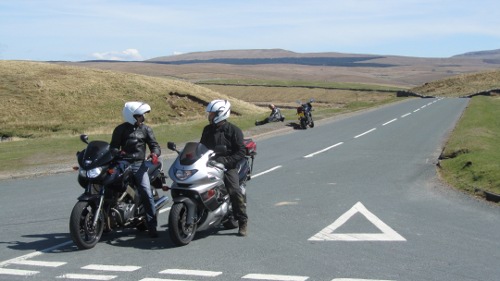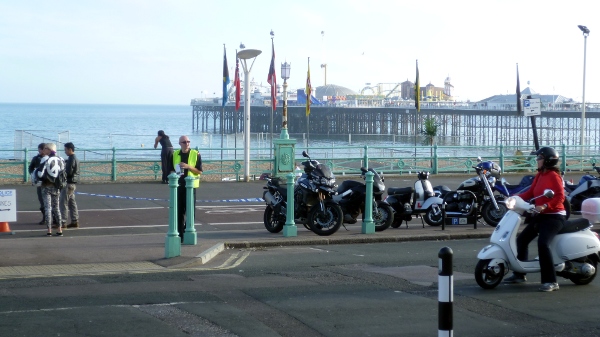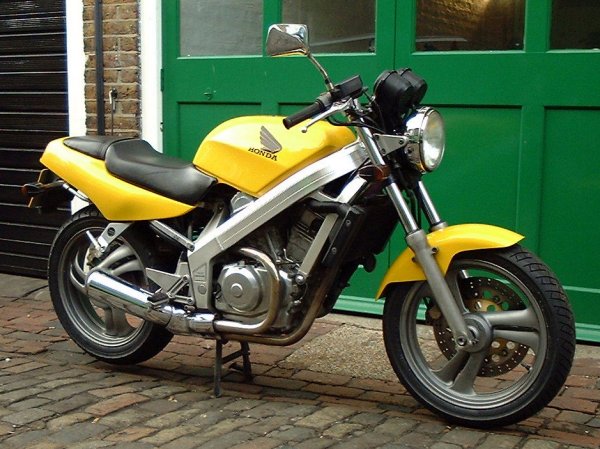Honda is working on smart technology to make roads safer
V2V and V2M technology is advancing
Honda, never backward in coming forward, especially where road safety is concerned, is currently working on new cutting edge technology designed to make riders, drivers and pedestrians safer.

Nice ride? Lovely, where shall we take the riders next?
Speak to me
The technology is based on sophisticated communication and sensing technology which Honda hopes will help to predict, and thereby prevent, road traffic accidents. It works by communicating information to the vehicles and people who might be involved in an accident, giving them time to take evasive action and therefore prevent the potential accident from happening. And it looks as though Honda are really committed to including these technologies in their vehicles once they are fully tested.
These innovations are currently only at the research and development stage but illustrate what Honda is working on and two of the important areas covered by the new technologies are:
V2P - Vehicle to Pedestrian
V2M - Vehicle to Motorcycle
.
Jim Keller, chief engineer for Honda R&D Americas, Inc said in a statement:
“While these are still experimental technologies, they provide a strong indication of the future potential for the kinds of advanced collision sensing and predictive technologies Honda is developing to further reduce the potential for serious accidents, injuries and even fatalities” “These V2P and V2M systems are part of Honda’s broad vision for smarter and safer vehicles and roadways.”
The story so far, how they work...
Vehicle to Pedestrian (V2V) technology
As part of the development of this technology, Honda Research and Development has successfully equipped a car with Dedicated Short Range Communications or
DSRC which has been shown to be able to detect a pedestrian ahead who has a DSRC enabled smart phone. The equipment works by the use of cooperative communication between the pedestrian's smartphone and the approaching vehicle, which then gives auditory and visual warnings to both the driver and the pedestrian.
The pedestrian is located using their smartphone GPS, its dynamic sensing capability and DSRC wireless technology. Basically the pedestrian's phone and the oncoming vehicle talk to each other using a communication channel to ensure that the pedestrian is not in danger of being struck by the vehicle. One of its great virtues is that it can sense the position of the pedestrian from the smartphone GPS so it can 'see' them even if they are hidden behind a parked car and not visible to the vehicle driver.
Using a proprietory app the smartphone determines various salient points like the speed and postion of the pedestrian and of the vehicle so it can predict whether a collision is imminent and issue a warning if so, via a series of beeps on the phone and a warning on the vehicle's navigation screen. It goes further in that the vehicle can receive information about whether the pedestrian is texting, listening to music or speaking on the phone and is therefore less likely to be traffic aware. Helpful, if slightly scary.

Scooter chatting to a row of motorcycles
Vehicle to Motorcycle (V2M) technology
The system is also being designed to work between cars and motorcycles. It assesses the likelihood of a collision between a motorcycle and a car by locating both vehicles and their speed and direction of travel. The sensors in the car can detect the presence of a motorcycle even when it is not visible to the driver – so SMIDSY won't be an option anymore! The system gives the car driver auditory and visual warnings of the presence of the bike so that they can avoid a collision.
A work in progress
Honda currently has eight vehicles being used in the research programme based in Ann Arbor, Michigan USA and with the support of the University of Michigan Transportation Research Institute.
These technologies are still at the prototype and testing stage so Honda are not ready to go live with them as yet, but they have released the latest information to let the driving and riding public know where they are heading.

Hello cars, I'm coming
When these smart technologies are fully developed and ready to be applied they should make a huge difference to road safety for riders, drivers and pedestrians.
For motorcyclists this seems like a very welcome development - to be visible to the vehicle which is approaching should make for a much safer riding environment. It is well known that drivers have difficulty judging the speed and distance of motorcycles so if their cars are doing it for them that can only be a good thing as long as it works really well.
Technological Information from Honda Press Office
Wemoto


